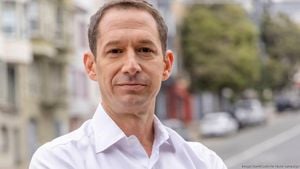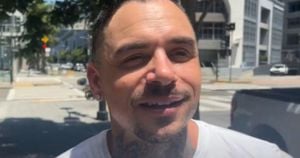Shuttered shops and silence hang over Sambhal, India, following violent clashes on November 24, 2024, which erupted during a court-ordered survey of the Shahi Jama Masjid. The unrest, fueled by historic grievances over religious sites, resulted in four fatalities and numerous injuries, including over 20 police officers. The local government responded with strict security measures — schools are closed, internet access suspended, and public gatherings prohibited as authorities attempt to manage the aftermath of the violence.
It all began when nearly 1,000 protesters gathered to obstruct the survey team, reacting against claims made by Hindu petitioners asserting the mosque was built atop the ruins of a temple demolished by Mughal emperor Babur over four centuries ago. This sensitive site has long been at the heart of religious contention, reflective of the broader tensions permeate communal relations across the country.
Sambhal's administration imposed prohibitory orders to maintain peace. Aunjaneya Kumar Singh, the local administrator, stated, "All educational institutions have been closed, and public gatherings have been prohibited." This drastic step aims to avert any potential escalation, with officials even barring outsiders from entering the city until at least November 30, emphasizing the urgency of restoring calm to the area.
The violence ignited when police were stationed to supervise the survey. Reports state demonstrators hurled stones at officers, leading to retaliatory measures including the use of tear gas. Despite the chaos, the survey continued, with local police officials describing the situation: "Some miscreants from the crowd resorted to violence, forcing us to deploy minor force and tear gas to restore order." Videos from the scene captured distressing images of burning vehicles and tumultuous confrontations between police and protesters.
According to police sources, rioters were reportedly armed with bricks, knives, and makeshift weapons. "They came prepared," stated Sambhal Superintendent of Police Krishan Bishnoi, emphasizing the premeditated nature of the unrest. He reported injuries to both officers and civilians, including attacked members of the Special Investigation Team. This indicates not just anger but also deep-seated tensions festering within the community.
Key figures associated with the events are now under scrutiny. Seven First Information Reports (FIRs) have been registered, naming Ziaur-Rehman Barq, MP from the Samajwadi Party, and other significant local political leaders, underscoring the incident’s political ramifications alongside its communal impact. The possibility of additional arrests looms as police navigate the investigation process using surveillance and gathered testimonies.
Sambhal's local community has expressed concerns about political bias and the alleged misconduct of law enforcement during the incident. Residents claim police gunfire caused the fatalities. A local witness recounted, "Why would Muslims kill their fellow brothers? We saw the police open fire," drawing attention to the fractures within local relations and deep distrust toward authorities.
On the other hand, police maintain they acted under orders to control mob action without deadly force, asserting the deaths resulted from clashes between rival groups rather than police brutality. Investigative efforts have commenced to ascertain the precise sequence of events, with preliminary conclusions sending deceased individuals' bodies for autopsy analysis to establish cause of death accurately.
Historically, this mosque has been the focal point of religious contention, bringing together centuries of layered narratives—historical, political, and religious. Proponents of taking actions like the survey argue it is necessary to clarify the history behind the mosque's origins, which they assert remains obscured by years of religious and political manipulation. Advocates, citing ancient texts, claim the mosque was erected illicitly on sacred ground taken from Hindus.
Conversely, opponents assert these moves violate the Places of Worship Act of 1991, intended to preserve the religious status quo of places of worship as they existed before the communal riots following India's partition. Critics argue inspections like this stoke communal tensions and are politically motivated amid nationalistic fervor proliferated by certain factions within India.
This incident isn’t just about historical grievances but echoes the broader societal fractures within contemporary India vis-à-vis religion. While the nation wrestles with challenges of pluralism and coexistence among diverse communities, such episodes remind us of the volatility often lurking beneath the surface. Ignited by age-old narratives and inflamed by contemporary politics, these clashes highlight the persistent struggle for peace and justice, raising questions about the resolve to address the underlying tensions before they erupt again.
Now, with schools shut, the internet disabled, and Sambhal under tight security, residents remain anxious. Local authorities continue to navigate the delicate balance of enforcing order and addressing grievances, hoping to restore peace without stoking more resentment as the memory of the violence lingers.



